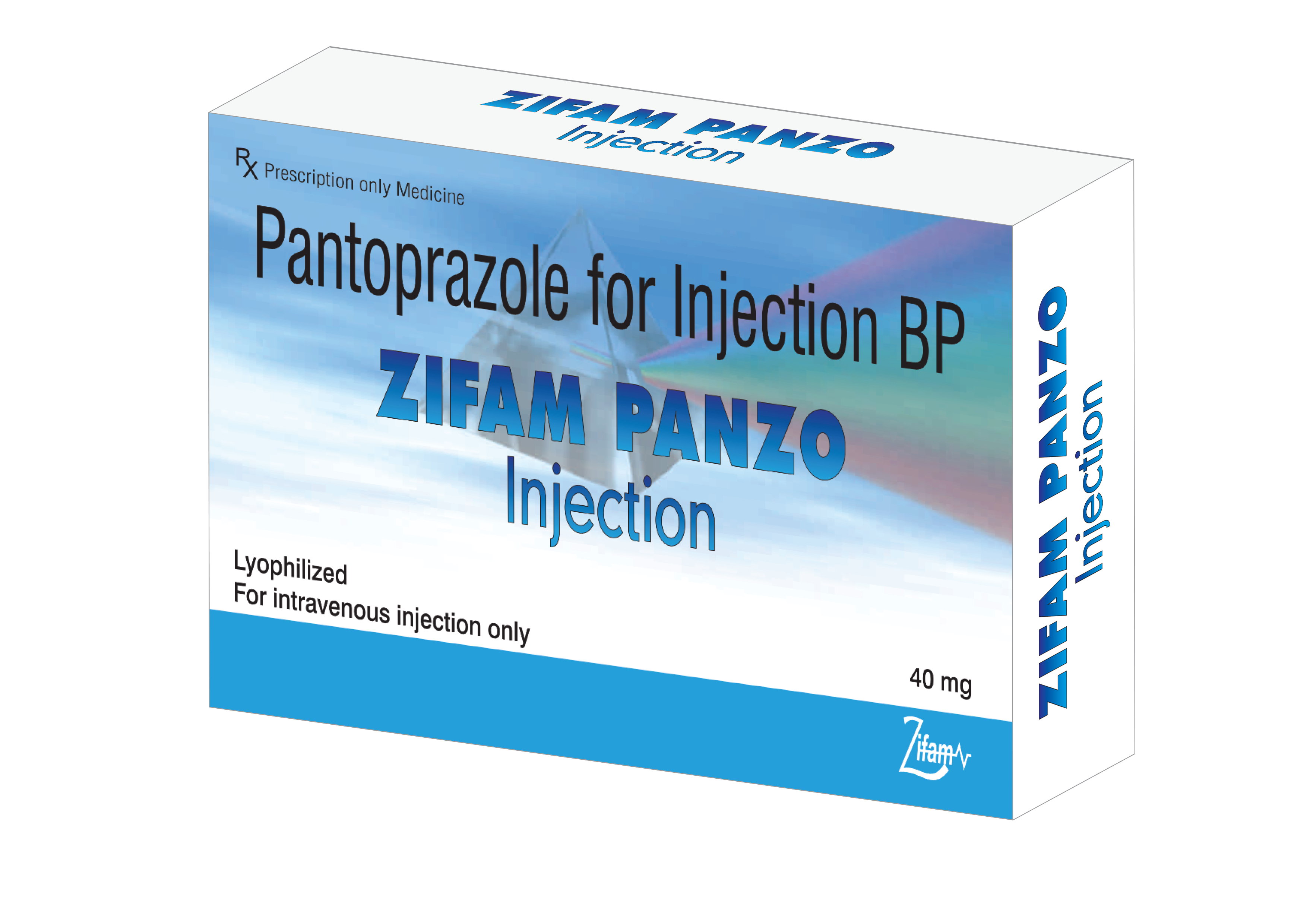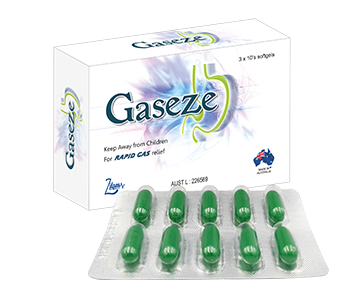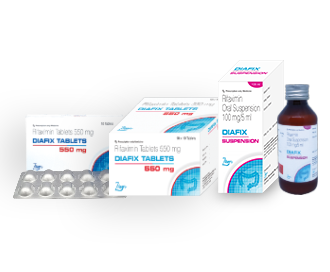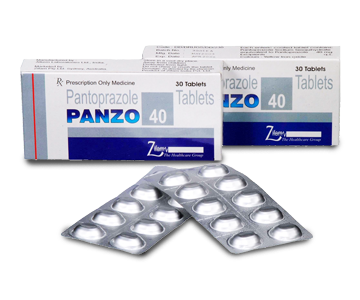Panzo D
- ENG
- မြန်မာ
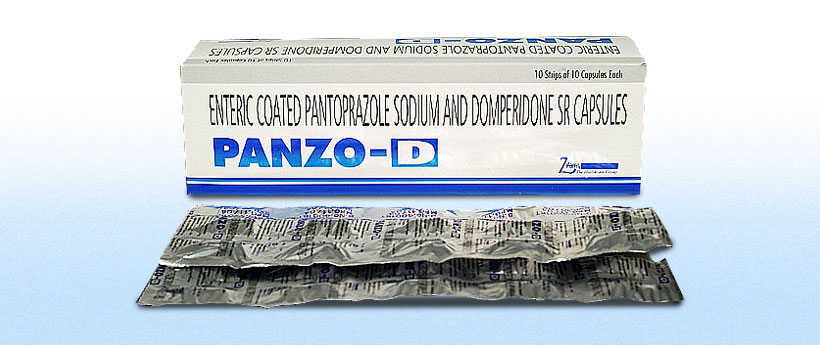
ENTERIC COATED PANTOPRAZOLE SODIUM AND DOMPERIDONE SR CAPSULES
COMPOSITION
Each hard gelatin capsule contains:
Pantoprazole Sodium Sesquihydrate BP
Equivalent to Pantoprazole 40 mg
(As enteric coated pellets)
Domperidone BP 30 mg
(As sustained release pellets)
Colour: Indigo Carmine, Sunset Yellow
Approved colours used in empty hard gelatin capsule shell.
Pharmacological action:
Therapeutic Category:
Proton Pump Inhibitor, Antiemetic
Mode of Action:
Panzo D is a combination of Pantoprazole and Domperidone.
Pantoprazole inhibits the H+/K+-ATPase enzyme, which is responsible for gastric acid secretion in the parietal cells of the stomach and irreversibly black the final step of acid secretion. It increases motility of GI tract by inhibiting the action of dopamine and fastens gastric emptying.
Pantoprazole with Domperidone is used to reduce the amount of acid produced by the stomach, to treat or prevent conditions such as heartburn, Gastritis, ulcers and GERD.
Pantoprazole exerts its full effect in a strongly acidic environment (pH<3) and remains mostly inactive at higher pH valuse, which explains its selectivity for the acid secreting parietal cells of the stomach. Therefore, the complete pharmacological and therapeutic effect for Pantoprazole can only be achieved in the acid-secreting parietal cells. By means of a feedback mechanism this effect is diminished at the same rate as acid secretion is inhibited.
Domperidone
Domperidon is a dopamine antagonist with antiemetic properties. Domperidone does not readily cross the blood-brain barrier. It seldom causes extrapyramidal side effects, but does cause a rise in prolactin levels. Its antiemetic effect may be due to a combination of peripheral (gastrokinetic) effects and antagonism of central dopamine receptors in the chemoreceptor trigger zone which lies in the area postrema and is regarded as being outside the blood-brain barrier.
It also antagonises the behavioural effects of dopamine much more effectively when administered intracerebrally than when given systemically. These findings, together with the low concentrations found in the brain, indicate a predominantly peripheral effect of domperidone on dopamine receptors.
Studies in humans have shown intravenous and oral domperidone to increase lower oesophageal pressure, improve antroduodenal motility and accelerate gastric emptying. Domperidone has no effect on gastric secretion.
Therapeutic Indications:
Panzo-D is indicated for the relief of following symptoms:DyspepsiaGastro Esophageal Reflux Disease (GERD)Nausea associated with acid peptic disordersPost-operative nausea and vomiting Chronic gastritis
Posology and Method of Administration:
Route of Administration: OralDosage- One capsule per day or as directed by the physician.
CONTRAINDICATIONS
Hypersensitivity to Pantoprazole.
Safety in pregnancy and during lactation has not been established. Safety and efficacy in children have not been established.
Severely impaired liver function.
- Known hypersensitivity to domperidone or any of the excipients
- Prolactin-releasing pituitary tumour (prolactinoma)
- Co-administration with oral ketoconazole (see Interactions)
DOMPERIDONE should not be used whenever stimulation of gastrointestinal motility might be dangerous such as in the presence of gastrointestinal haemorrhage, mechanical obstruction, or perforation.
ADVERSE EFFECTS / SPECIAL PRECAUTIONS
Headaches and gastro-intestinal complaints such as upper abdominal pain, diarrhoea, constipation or flatulence have been reports. With continued treatment complaints usually diminish.
There have been less frequent reports of nausea, dizziness or disturbances in vision (blurred vision).
Peripheral edema, depression, fever or myalgia have been reported in individual cases.
Pantoprazole is not indicated for mild gastro-intestinal complaints such as nervous dyspepsia.
Prior to treatment, the possibility of a malignant gastric ulcer or a malignant disease of the oesophagus should be excluded, as the treatment with Pantoprazole may alleviate the Diagnosis of reflux oesophagitis should be confirmed by endoscopy.
DOMPERIDONE
The adverse drug reactions are ranked by frequency using the following convention: Very common (>1/10); common (>1/100, <1/10); uncommon (>1/1000, <1/100); rare (>1/10000, <1/1000); very rare (<1/10000), including isolated reports.
Immune system: Very rare: allergic reaction
Endocrine: Rare: increased prolactin levels
Nevous system: Very rare: extrapyramidal side effects
Gastrointestinal: Rare: gastrointestinal disorders, including very rate transient intestinal cramps
Skin and subcutaneous tissue: Very rare: urticaria
Reproductive system: Rare: amenorrhoea
Other: Rare: galactorrhoea, gynaecomastia
As the hypophysis is outside the blood brain barrier, domperidone may cause an increase in prolactin levels. In rare cases this hyperprolactinaemia may lead to neuro-endocrinological side effects such as galactorrhoea, gynaecomastia and amenorrhoea.
Extrapyramidal phenomena are very rare in neonates and infants, and exceptional in adults. These side effects reverse spontaneouly and completely as soon as the treatment is stopped.
PRESENTATION
Strip of 10 Sustained Released Capsules






